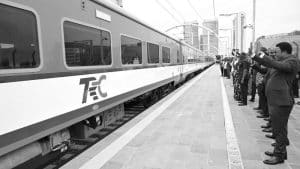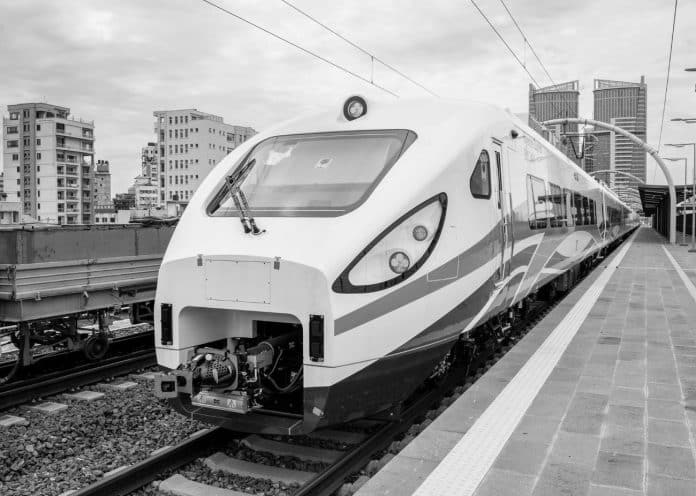Introduction to Tanzania’s Standard Gauge Railway (SGR)
Tanzania’s Standard Gauge Railway (SGR) is a transformative infrastructure project that is poised to revolutionize the country’s transportation landscape. This modern rail network is designed to enhance connectivity, boost economic growth, and improve the overall quality of life for the Tanzanian people. As you delve into the details of this ambitious undertaking, you’ll discover how the SGR is paving the way for a brighter future for Tanzania.
The History of the SGR Project in Tanzania

The origins of the SGR project in Tanzania can be traced back to the early 2010s, when the government recognized the need to modernize the country’s aging railway system. The existing narrow-gauge railway network, which had been in operation since the colonial era, was plagued by slow speeds, limited capacity, and frequent breakdowns. Recognizing the importance of efficient transportation for economic development, the Tanzanian government embarked on an ambitious plan to construct a state-of-the-art standard gauge railway system.
The SGR project was officially launched in 2017, with the goal of connecting the country’s commercial capital, Dar es Salaam, to the landlocked regions of the country and neighboring countries. The project was undertaken in phases, with the first phase focusing on the construction of a 205-kilometer stretch of railway from Dar es Salaam to Morogoro.
Advantages of the Standard Gauge Railway
The SGR project offers a multitude of advantages that make it a game-changer for Tanzania’s transportation landscape. Some of the key benefits include:
- Increased Speed and Efficiency: The standard gauge railway system is designed to operate at significantly higher speeds compared to the old narrow-gauge network. This allows for faster and more reliable transportation of goods and passengers, reducing travel times and improving overall efficiency.
- Enhanced Capacity: The SGR’s modern infrastructure and rolling stock can accommodate larger volumes of cargo and more passengers, enabling the transportation of a greater number of goods and people across the country.
- Improved Connectivity: The SGR network is being constructed to connect major cities and economic hubs within Tanzania, as well as to neighboring countries. This enhanced connectivity will facilitate the movement of people, goods, and services, fostering greater economic integration and trade.
- Reduced Environmental Impact: The SGR’s electric-powered trains produce significantly lower emissions compared to the diesel-powered locomotives used in the old railway system. This contributes to a more sustainable and environmentally-friendly mode of transportation.
- Safer Travel: The SGR’s advanced safety features, including modern signaling systems and dedicated tracks, help to reduce the risk of accidents and ensure a safer journey for both passengers and cargo.
Economic Impact of the SGR on Tanzania
The SGR project is poised to have a transformative impact on Tanzania’s economy. By enhancing transportation efficiency and connectivity, the railway is expected to drive economic growth and development in several key areas:
- Trade and Logistics: The SGR’s ability to facilitate the faster and more reliable movement of goods will boost Tanzania’s competitiveness in regional and global trade markets. This, in turn, will attract more investment and foster the growth of industries and businesses.
- Tourism: The improved accessibility to various regions of Tanzania through the SGR network will make it easier for tourists to explore the country’s diverse attractions, from the iconic Serengeti National Park to the stunning beaches of Zanzibar. This is expected to lead to an increase in tourist arrivals and revenue.
- Agricultural Development: The SGR will provide farmers and agricultural producers with better access to markets, enabling them to transport their products more efficiently and reach a wider customer base. This will help to boost agricultural productivity and incomes.
- Job Creation: The construction and operation of the SGR project have already generated thousands of jobs, both directly and indirectly, contributing to the country’s employment and economic well-being.
Infrastructure Development Along the SGR Route
The SGR project is not just about the railway itself; it is also catalyzing the development of supporting infrastructure along the route. This includes the construction of new stations, logistics hubs, and industrial parks, which are expected to attract further investment and spur economic growth in the surrounding areas.
The development of these infrastructure projects is creating opportunities for local businesses and communities to participate in the economic transformation. This includes the provision of services, the establishment of new enterprises, and the creation of employment opportunities for the local population.
Challenges Faced During the Implementation of the SGR
The SGR project has not been without its challenges. The construction of a large-scale infrastructure project of this magnitude has inevitably faced various obstacles, including:
- Land Acquisition and Resettlement: Securing the necessary land for the railway’s right-of-way has required extensive negotiations and compensation processes with affected landowners and communities.
- Financing and Funding: The SGR project has required significant financial resources, and securing the necessary funding from both domestic and international sources has been a continuous challenge.
- Technical Complexity: The construction of the railway, including the installation of tracks, bridges, and signaling systems, has required a high level of technical expertise and coordination.
- Environmental Considerations: The project has had to navigate environmental concerns, such as the preservation of sensitive ecosystems and the mitigation of potential environmental impacts.
Despite these challenges, the Tanzanian government and its partners have demonstrated a strong commitment to overcoming the obstacles and ensuring the successful implementation of the SGR project.
Environmental Considerations of the SGR

The SGR project has placed a strong emphasis on environmental sustainability, recognizing the importance of balancing economic development with environmental protection. Some of the key environmental considerations include:
- Reduced Emissions: The use of electric-powered trains, as opposed to diesel-powered locomotives, significantly reduces greenhouse gas emissions and contributes to a more environmentally-friendly mode of transportation.
- Habitat Conservation: The project’s route has been carefully planned to minimize the impact on sensitive ecosystems and protected areas, ensuring the preservation of biodiversity and natural habitats.
- Waste Management: The construction and operation of the SGR have incorporated measures to effectively manage waste and minimize the environmental footprint of the project.
- Community Engagement: The project has engaged with local communities to understand their environmental concerns and incorporate their feedback into the planning and implementation process.
By prioritizing environmental considerations, the SGR project aims to set a new standard for sustainable infrastructure development in Tanzania and the region.
The Future of Transportation in Tanzania with the SGR
The successful implementation of the SGR project is poised to transform the future of transportation in Tanzania. Once fully operational, the railway network is expected to:
- Enhance Connectivity: The SGR will connect major cities and economic hubs within Tanzania, as well as link the country to its neighbors, facilitating the seamless movement of people, goods, and services.
- Boost Economic Growth: The improved transportation efficiency and reduced logistics costs will unlock new opportunities for businesses, attract investment, and drive economic development across various sectors.
- Improve Quality of Life: The SGR’s faster, more reliable, and environmentally-friendly transportation options will enhance the overall quality of life for Tanzanian citizens, improving access to essential services, education, and employment opportunities.
- Foster Regional Integration: The SGR’s connections to neighboring countries will promote regional integration, enabling Tanzania to play a more prominent role in the economic development of the East African region.
Comparison Between the SGR and the Old Railway System
The transition from the old narrow-gauge railway system to the modern standard gauge railway represents a significant leap forward in Tanzania’s transportation infrastructure. Here’s a comparison of the key differences:
| Feature | Old Railway System | Standard Gauge Railway (SGR) |
|---|---|---|
| Speed | Slow (maximum speed of 60 km/h) | High-speed (maximum speed of 160 km/h) |
| Capacity | Limited (smaller trains and fewer wagons) | Increased (larger trains and more wagons) |
| Reliability | Frequent breakdowns and delays | Improved reliability and punctuality |
| Connectivity | Limited connectivity within Tanzania and to neighboring countries | Enhanced connectivity within Tanzania and to regional hubs |
| Environmental Impact | Higher emissions and energy consumption | Lower emissions and more energy-efficient |
| Safety | Higher risk of accidents | Improved safety features and signaling systems |
Conclusion: The Transformative Potential of the SGR for Tanzania’s Transport Sector
The Standard Gauge Railway project in Tanzania represents a transformative leap forward in the country’s transportation landscape. By modernizing the railway system, the SGR is poised to enhance connectivity, boost economic growth, and improve the overall quality of life for the Tanzanian people.
As the project continues to progress and the full benefits of the SGR are realized, Tanzania’s transport sector will be revolutionized, paving the way for a brighter, more prosperous future. The SGR’s impact will be felt across various industries, from trade and logistics to tourism and agriculture, driving sustainable development and positioning Tanzania as a regional economic powerhouse.
For more articles related to Railway and train travel Tanzania, click here!

































